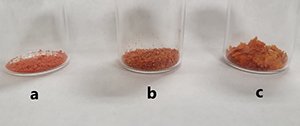Development of new organic ingredients from the tomato variety “Pera d’Abruzzo”
Consumers concern on environmental and health issues related to nutrition. In this regard, the consumption of organic food is increasing worldwide and organic food often is expected to be produced more sustainable and provide more healthy properties than the correspondent conventional ones. In the CORE Organic Cofund project SusOrgPlus natural extracts has been tested as organic food additives.
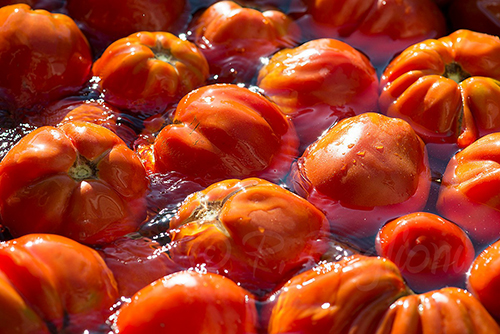
In Work Package 3 of the SusOrgPlus project, the research unit of Food Technology of the University of Teramo, Italy, coordinated by Prof. Paola Pittia, together with SINTEF, Uni Kassel and UASVM is studying the development of new organic additives and ingredients consisting of dehydrated organic plant products or encapsulated natural extracts to enrich organic food products in terms of nutritional fortification and simultaneously as natural preservatives, colourants, and flavourings. Besides developing natural additives from nettles and hops, tomatoes were identified as a high valuable product regarding organic food processing.
The organic tomato variety “Pera D'Abruzzo” (figure 1) was identified as the ideal raw material to obtain juice due to its rural and resistant plant that supplies large fruits (250-300g each) with fleshy pulp, reduced number of seeds and high lycopene content. Dried powders from organic tomatoes (cv. Pera d’Abruzzo) juice with healthy, colouring and flavouring properties have been developed by encapsulation with maltodextrins and proposed as new ingredient to meet the demand of natural and organic additives/ingredients. Preliminary results show that the addition of maltodextrins to tomato blanched extracts positively affects the freeze-drying process by hindering structural collapse phenomena as well as the technological functionality and the functional properties of the freeze-dried products.
Dried and milled residues (skin and seeds) from the tomato juice production are also under observation in terms of food waste reduction to be exploited in food formulation due to their nutritional, functional and colouring properties. Powders obtained from tomato wastes show a high content of lycopene and other antioxidant compounds which makes them usable in various food formulations as colouring and antioxidant agents.
The analysation and evaluation of the developed powders regarding chemical, physical and functional characteristics and their stability towards physical stress is ongoing.
| Figure 2 below shows the flow-sheet of the experimental plan implemented to obtain the tomato juice: |
|---|
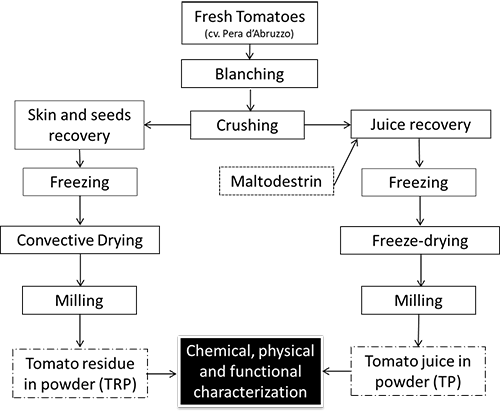 |
Blanched tomato juice and residue obtained after extraction are shown in figure 3 while dried tomato powders are displayed in figures 4 and 5:
Figure 3 - Blanched tomato juice and residue obtained after the extraction process. |
|---|
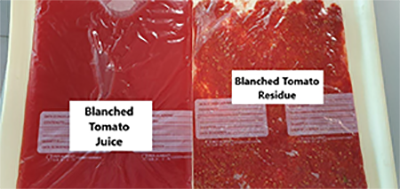 |
| Figure 4 - Dried tomato powders (a= tomato juice freeze dried without maltodextrins; b= sieved residue; c= no-sieved residue) |
|---|
|
Figure 5 - Tomato powders obtained from juice formulated with different percentages of maltodextrins with dextrose equivalent of 2.5 (3a) and 7.5 (3b). |
|---|
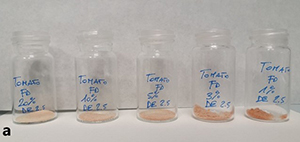 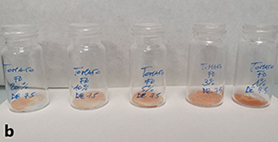 |
Author info
Paola Pittia (ppittia@unite.it)
Marianna Giancaterino (giancaterinomarianna@gmail.com)
Lilia Neri (lneri@unite.it)
Editor: Karin Ullven / Design: Christine Dilling
